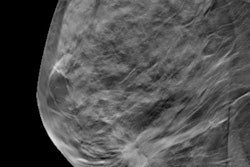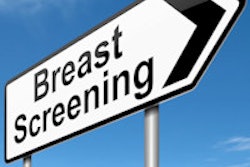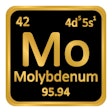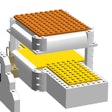
Scandinavian researchers have conducted a large cost-effectiveness study comparing digital breast tomosynthesis (DBT) with digital mammography. They published their findings online on 9 August in the European Journal of Health Economics.
DBT has higher incremental costs when compared with digital mammography for overall, recall, and treatment measures, suggesting there's more work to be done to bring it on par with digital mammography when it comes to cost, wrote a team led by Prof. Tron Anders Moger, PhD, from the department of health management and health economics at the University of Oslo in Norway.
 Prof. Tron Anders Moger, PhD, from Oslo.
Prof. Tron Anders Moger, PhD, from Oslo."On the one hand, DBT will have higher costs than digital mammography due to the additional investment required and expected longer times used for screen readings," the group wrote. "On the other hand, possibly lower recall rates, less extensive diagnostic workup and treatment due to better or earlier detection ... will reduce the cost difference per woman screened."
Studies in both Europe and the U.S. have implied that DBT is more cost-effective than digital mammography, but the cost of implementing the technology into screening programs has remained unclear, the group wrote. To address the knowledge gap, Moger and colleagues analyzed data from Norway's Tomosynthesis Trial in Bergen (To-Be), which compared DBT with digital mammography and included information from 29,453 women.
The authors assessed the incremental cost of DBT versus digital mammography per screened woman by considering the following costs by stage: screening, recall assessment, and treatment.
In general, additional DBT costs decreased in response to various factors -- such as reduced storage cost, DBT system prices, and total reading time -- but not enough to bring the exam on par with digital mammography, the team wrote.
| Additional incremental costs of screening DBT compared with digital mammography alone (in euros) | ||||
| Cost stage | Overall | 50% reduction in storage and connectivity costs | 30% reduction in price of DBT systems | No additional exam time, 20% reduction in total reading time for DBT |
| Incremental screening costs | 8.5 | 6.4 | 8.1 | 6.1 |
| Adding recall costs | 9.8 | 7.8 | 9.4 | 7.5 |
The researchers' analysis showed that even reductions in the incremental cost of DBT devices, storage, connectivity speed, and reading times didn't reduce costs sufficiently.
"To reach a borderline nonsignificant incremental cost of DBT after the recall assessment, one would need ... a combination of 50% reduction in storage and connectivity costs, equal examination time, and a 20% reduction in reading times. The incremental cost of DBT per screened woman would then be 1.7 euros," the team noted.
More research on DBT's cost-effectiveness compared with digital mammography alone is needed, according to Moger and colleagues.
"It is too early to conclude with certainty whether DBT reduces the procedure and medication use in the treatment stage of breast cancer, or the impact different detection rates could have on the results," they concluded. "The cost-effectiveness will be modeled when estimates of the interval cancer rates and cancers detected in subsequent rounds are available from the To-Be trial."



















